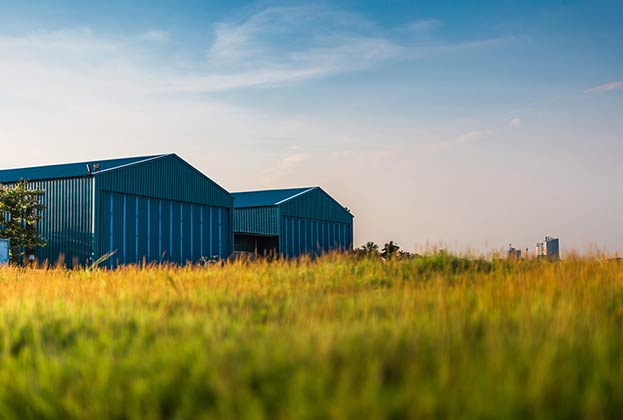Increased delivery expectations of consumers
As online retail has grown over the last decade, so has the demand for warehouse space. Indeed, the average amount of space transacted per year has risen from 16 million sq ft in 2009 to almost 28 million sq ft by the end of 2019. Research from warehouse developer Prologis states that for every additional £1 million spent online a further 770,000 sq ft of warehouse space is needed, which was highlighted in June 2020 as online retail reached 33% of all retail sales. If these levels continue next year an additional 14.9 million sq ft of space will be needed.
On the whole, supply chains have been configured to allow for the fast-paced delivery of products to where populations live and work, primarily around large cities. Indeed, prior to lockdown, data from Metapack, a provider of delivery management software to the logistics industry, showed that 70% of the parcels delivered in the UK went to just 7.5% of the country. Consumers living in more rural locations have long complained of a two-tier system where they are excluded from the benefits of next-day, or even same-day delivery options. This may well change as consumers with urban expectations move into rural locations.
Consumers living in more rural locations have long complained of a two-tier system where they are excluded from the benefits of next-day, or even same-day delivery options
Savills Research
At its heart, logistics is about efficiencies and a key problem with rural markets is that areas are more sparsely populated, meaning delivery routes are less efficient. However, lockdown has acted as a catalyst for change. Data from online parcel broker ParcelHero has shown that 91 local authorities in the UK have seen parcel deliveries rise by more than 100% over the past year. The response of many online retailers and delivery companies has been to recruit more staff and purchase more vehicles to meet this increased demand. Indeed Amazon, Hermes and DPD have announced plans to recruit 26,000 additional staff. However, as many depots reach capacity additional solutions will be needed, such as acquiring new and larger warehouses or other innovative solutions using pre-existing real estate.
Indeed in rural parts of the US delivery companies use a process called On Road Dynamic Transfer whereby larger vehicles drive to a rural location, unload the parcels on to smaller vehicles for onward delivery to the consumer. While this is not common in the UK yet, its implementation is a possibility should the demand for rural deliveries continue. In real estate terms, many existing rural locations could be well suited to this, so long as access and security can be guaranteed.
What is the impact for rural landowners?
Our calculations suggest a potential 24.6m sq ft of additional warehouse space are needed in rural areas, which, assuming industry-standard plot ratios, would mean 1,230 acres of land is required. From a logistics perspective, the most preferable option is always to take facilities that are designed for the use intended. This would, therefore, suggest that rural local authorities should be making preparations in their local plans to allow for the extension of existing industrial estates.
However, we have historically observed that in areas of high warehouse demand and extremely low supply potential occupiers are prepared to make compromises to their operational requirements. This has been shown clearly in London where industrial vacancy rates have plummeted to around 2% and companies such as DPD and Amazon have taken underground car parks or converted retail warehousing to meet their needs.
So, where operational requirements cannot be met through traditional means what options do rural landowners have to diversify to meet that need? The first consideration is what land can be brought forward for the development of modern warehouse facilities. In this instance, connectivity to the wider road network is key. Repurposing existing structures should also be examined when suitable land is not available. Given their height and flooring, grain stores would be the most preferable option, followed by secure yard space and, lastly, the reuse of dairy buildings. Given the size and use of these buildings the exception of requiring a commercial EPC may make this an attractive option.
The remainder of this publication examines these options in greater detail.
Read the articles within Spotlight: Rural Logistics below.
.jpg)
.jpg)

